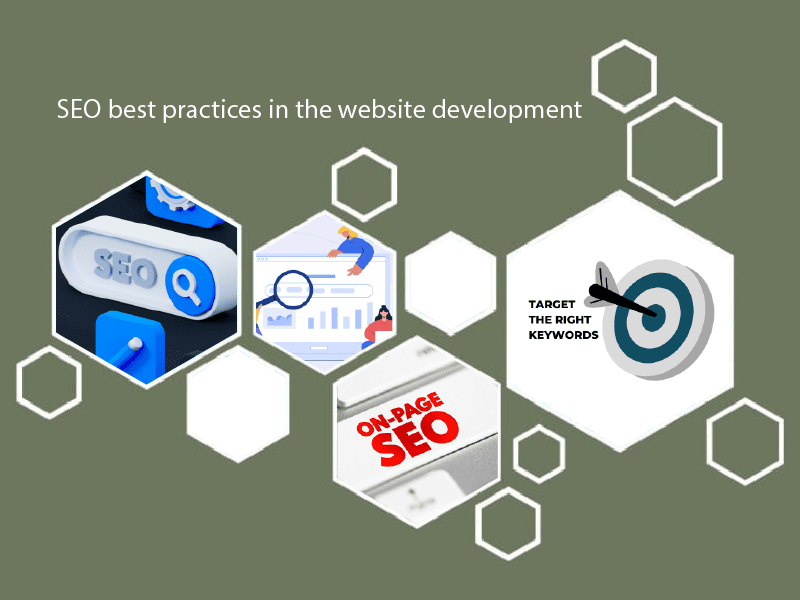Integrating SEO best practices in website development
Today’s Internet is highly competitive in design; even a well-crafted, beautiful website is not enough. For the website’s success, the site must be known to potential visitors, and search engines are the way to find that audience. This is where Search Engine Optimization (SEO) comes into play. SEO involves optimizing your website to make it easier for search engines to identify and rank you higher on search engine results pages (SERPs).
This is a result of incorporating SEO into the website’s initial development. It is much easier and cheaper to maintain a high-ranking status. Applying SEO principles when designing your website ensures that you get a good-looking site and traffic from search engines. In this blog post, we will discuss how to make SEO a part of your website design process and achieve improved search engine rankings and sustainable success.
Understanding Keyword Research
Keyword research is the basis of every successful SEO campaign, as it is a vital step. Secondly, the number of visitors to the website determines the list of keywords that target potential clients. These steps will make it easier to achieve content marketing goals by maximizing the probability of meeting users’ expectations and search engine ranking.
Use Keyword Research Tools
Google Keyword Planner or other KPI tools like SEMrush and Ahrefs will help you determine the search volume that a particular set of keywords will generate and the competition you will face.
Focus on intent.
Three types of keywords exist: informational, indicating a person’s need for specific information; navigational, indicating a desire to locate a specific website; and transactional, indicating a willingness to make an immediate purchase. The author should analyze each keyword based on their purpose and develop content accordingly.
Long-Tail Keywords
These keywords are typically more targeted and contain less search traffic competition, which is why they’re easier to target.
This approach allows you to incorporate the data on people’s interests in your site and how they would like it designed during its development.
SEO-Friendly Site Design and URLs
Website structure is crucial in terms of usability and SEO and directly impacts the visibility of your website. This implies that it is advisable to create a structured web architecture during the creation of web pages, as it will aid in optimizing your site for search engines.
Make sure you have a well-structured site with a clear hierarchy and an easy-to-follow path through it. Important pages should be no more than 2 or 3 clicks away from the home page to aid both search engines in crawling and indexing your content.
SEO-friendly URLs and breadcrumb navigation
The URL holds significant importance in SEO. Keep your URLs neat, meaningful, and, as far as possible, keyword-rich. Breadcrumbs provide other types of navigation and inform users of their position in their current context within the site. Not only do the breadcrumbs make a website easier to use, but they also raise SEO by establishing more internal links and hierarchy.
Google announced that it had shifted to a mobile-first index, which indexes and ranks a website according to the content it provides in the mobile version. It is now mandatory that your website be responsive to mobile devices to achieve the success needed in your SEO campaign.
Ensure your website design is responsive to any device, such as a PC, a tablet, or a mobile phone. A responsive design helps customers have a friendly interface on all the devices they use to access a website.
Check how well your site performs on a mobile device using Google’s Mobile-Friendly Test tool. Minimize the usage of touch points with a multi-touch screen, reduce or eliminate the use of pop-ups, and make it mobile-friendly. We specifically discussed the importance of desktop and mobile site speeds for the ranking. We can apply fewer image resolutions, less code, and the lazy loading technique to achieve the desired results on small screens.
On-page SEO
On-page SEO is optimizing special pages to reach the best ranks in SERPs. These features include titles, heading tags, meta descriptions, and more. We consider SEO for each web page when designing a website and developing its layout and structure.
The title tag is one of the most essential elements of the on-page SEO technique. Ensure all subsequent web pages have an optimized title tag with no more than 60 characters containing the relevant keywords. Metadescriptions are brief descriptions that give an idea of the information on a page. Although they do not adversely affect rankings, excellent descriptions increase click-through ratios (CTR). Each page, therefore, should have an effective meta description that is between 150 and 160 characters long.
Header tags help organize your content appropriately; hence, using them would be advisable. The H1 tag should include the main keyword and provide the user with what to expect on the page. Divide content with sub-headings: H2 and H3. Strong internal linking guides search engines to the relevant and important pages, as well as the connections between these pages. Make sure your development process incorporates a strategic plan for linking these parts to other pages on the site.
SEO-optimized content
SEO is all about content. Google, for instance, prefers sites with quality, relevant, and informative content that answers the user’s query. As you build your website, ensure that you post content alongside optimizing for the website.
The title, headers, first 100 words, and body of your content should contain your target keywords. Never use heavy keywords; this is more harm than good. You should focus on creating high-quality content that meets the needs of users. Blog articles containing long and in-depth information tend to rank better in search engines. Always make sure to refresh your content from time to time. Such engines also tend to filter out stale information or content that may not reflect the most current information in a given industry, where knowledge becomes outdated rapidly.
Website speed optimization
The update of Google Core Web Vitals has further highlighted the importance of site speed as a ranking factor for SEs. Slow websites negatively affect bounce rates, people’s satisfaction, and search engine rankings. While developing, keep your site fast.
One of the major issues contributing to slow loading is the size of the image files on the web page. There are some excellent tools out there, such as TinyPNG, Image Compressor, or ImageOptim, that you can use to reduce your file sizes without losing quality.
Remove characters as much as possible from the CSS, JavaScript, and HTML files, including spaces and comments. Minify Code has a positive impact whereby your websites will load faster.
Enable browser caching by storing frequently accessed static elements (images, stylesheets, and JavaScript files) in the clients’ browser cache to enhance subsequent page load time.
Conclusion
Integrating SEO practices into the website development process is crucial for achieving higher rankings, enhancing visibility, and improving user-friendliness. You create an SEO-focused website that can tailor every step of the process to achieve the best long-term results for users and search engines.
Besides increasing the flow of organic traffic, it also allows you to remain relevant in the chosen sphere. If you’re starting a new site or redeveloping an old one, SEO should be one of the first considerations in your process. This way, you’ll be up for the best chances of success in the always-changing digital marketing. So, if you want to make your website SEO-friendly, AngelwingsTourism.com is here to help boost your audience.




